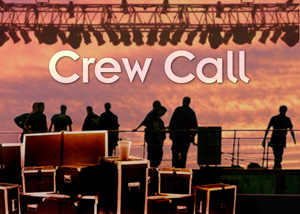Manual Control
 I sit here after the holidays, with (as usual) a list of people that I forgot to get gifts for, but I have figured out the gift that I am going to give everyone this year.
I sit here after the holidays, with (as usual) a list of people that I forgot to get gifts for, but I have figured out the gift that I am going to give everyone this year.
For 25 years, I have been everybody’s tech support. My relatives, my employees, my friends all call me when they can’t figure out something with the massive suite of electronics that each person in this world is acquiring. Their home entertainment systems, their computers, their PDAs, their GPS devices… The list goes on and on.
I think every audiovisual company has someone in that role. There’s always the one guy or girl that we go to when someone has to figure out something new. I spent most of my life in the staging industry, which means we have to get a device on Monday and be an expert in its use on Tuesday for the show that happens Tuesday night.
There is a “secret” to this. We read the manual. That’s it.
The gift I’m giving them this year? Before I will help with a problem, I am sending them back to look in their manuals. I recommend that all of us in that “underground technical support” position do the same. I’ll tell them what page to look on in their manual, but I’m going to make them look in the book. And if they didn’t get a book, I’m going to tell them they should look for other products. Period.
I’m doing it because I think our industry is getting a false reputation for dumbing down. Manufacturers and distributors are beginning to think of YouTube videos and help files as being a substitute for a real manual. They are not.
Why do they think this? Because often they don’t know that guy or gal who is the internal technical support. That is largely because small companies typically don’t have a role like chief technology officer. So when manufacturers talk to end-user technicians, they’re going to tell you that they don’t read the manual. What they are not going to tell you is that Bob the rental manager, or at the service bench (or in accounting for that matter) does, and that when they have a problem they ask Bob first. They may not even know that that’s where Bob gets his vast knowledge. But for the vast majority of users, somewhere along the line, there’s a Bob.
And, for those of us in the Bob role, I am going to start encouraging the demand for better documentation.
So, for those of you who are making or distributing products, let me give you some hints as to what makes adequate documentation (or does not).
- Adequate documentation is only very, very rarely written by the engineers. They are far too close to the product, and take too much knowledge for granted. While they make contributions of information, they should not be in charge of manual development, or of determining what represents an adequate manual.
- A document that goes over the menus and icons one-by-one, defining them, is NOT a manual.
- A real manual has at least one section that is task-oriented. Look for sections like “To begin a recording” or “Setting the device up on a network,” that goes step-by-step through how to accomplish given tasks with the new gear.
- A real manual has a glossary; not every buyer will be familiar with every term used in your instructions. Manuals should be tested by knowledgeable, but inexperienced users before they are released. A user should be put in a room with a product and a manual and required to perform basic tasks with the product. If they fail, so does your manual.
- Sending people to the help file or online videos from the manual is cheating — it’s an excuse, in my opinion, for publishing an incomplete document. And only very rarely have I seen it actually provide all the information that was necessary. And on more than a few occasions, I have seen them not actually be there, as the mention of them was put in the manual before the product was released.
- YouTube is a particularly bad place to put instructional video, even though you all seem in love with it because it’s easy, free and will accept your poorly-produced videos. The real problem with YouTube is that it leads users astray. Not only are your videos about your product there, so are hundreds of end-user videos, which will show up next to yours, and often be incorrect.
There’s an old saying that “The project isn’t finished until the paperwork is done,” and nowhere is it more true than in product documentation. I have many, many colleagues who complain privately about the quality of documentation. I’m telling them all, this year, to begin sending their users back for real manuals.
And as to your YouTube based instructions? Bah, Humbug.
rAVe Rental [and Staging] contributor Joel R. Rollins, CTS, is general manager of Everett Hall Associates, Inc. and is well known throughout the professional AV industry for his contributions to industry training and his extensive background in AV rental, staging and installation. Joel can be reached at joelrollins@mac.com





